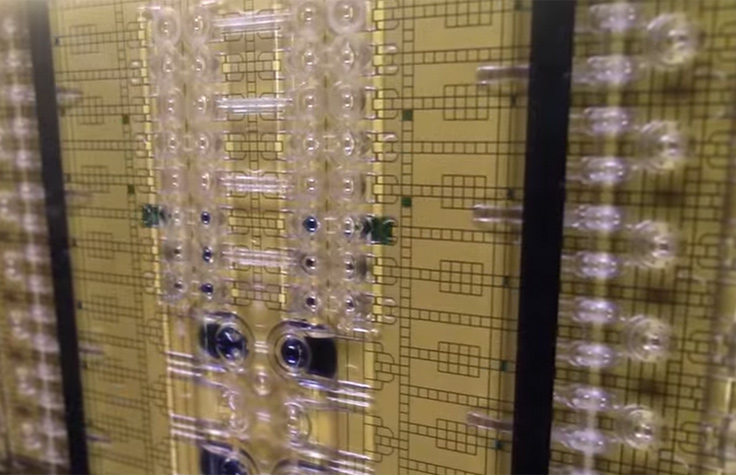Digital Microfluidics
A Transformative Fluid-Handling Technology
Digital microfluidics is an advanced fluid-handling technology that precisely manipulates nanoliter-sized droplets to perform complex laboratory protocols. This innovation enables the elimination of most manual steps during procedures such as sequencing library preparation, quantification, and normalization. Read on to learn more about the basics of this technology.

Technology Basics: "Electrowetting"
Digital microfluidics is based on the use of “electrowetting,” which refers to the ability of an applied voltage to modulate the “wettability” of a surface. Aqueous droplets naturally “bead-up” on a hydrophobic surface, but a voltage applied between a droplet and an insulated electrode can cause the droplet to spread on the surface.

Aqueous droplets spread on a hydrophobic surface when a voltage is applied
Digitally Controlled Droplets
Digital microfluidics harnesses electrowetting to control droplets. Electrical signals are applied to an array of electrodes to define the size and position of each droplet. Droplets are moved by turning the voltage on and off in succession across adjacent electrodes.

Droplets move as voltage is applied to a succession of adjacent electrodes
Basic Operations to Build Complex Protocols
The same mechanism can be used to dispense, merge, and mix droplets using electrical signals. These basic operations become the building blocks to perform biochemical reactions.
Systems that utilize digital microfluidics can also integrate thermal, magnetic, and optical components to perform processes such as PCR, bead-based operations, and quantification. This allows conservation of precious sample material and significantly reduces the potential for human error.
Additional Information
Automated Library Prep Buyer's Guide
Learn what to consider when evaluating library prep automation systems.